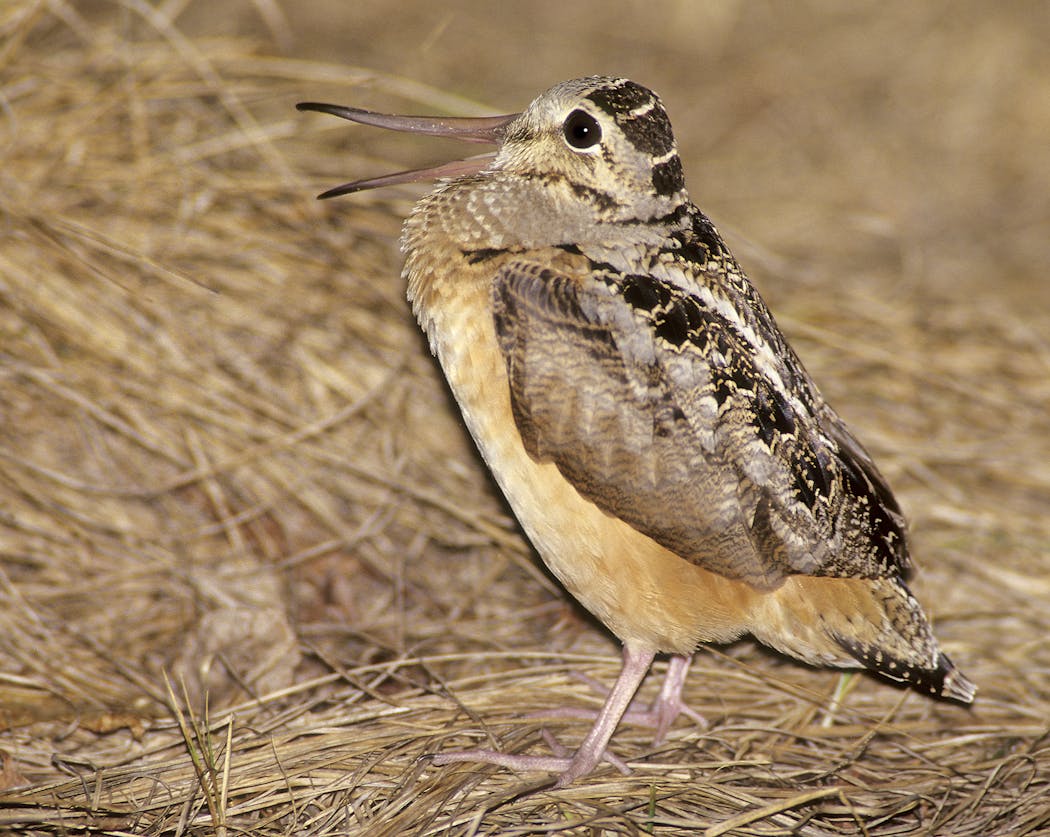Valentine's Day is a time when we express our affection with gifts and greetings to those significant in our lives. Some speculate birds are a symbol of Valentine's Day because mid-February is when some begin to mate, although they don't show it with flowers and candy.
Already, bald eagles are paired up and have started nesting. So have great-horned owls. Cardinals are singing, ruffed grouse are strutting, and we hear an occasional wild turkey gobbling.
One of the most interesting courtship rituals in all the bird world is that of the American woodcock. It's called "Sky Dance." You might wonder, what is Sky Dance? If I miss it, will it come out on DVD?
Sky Dance is a fascinating springtime courtship that involves both aerial and ground displays. It begins as soon as woodcock migrate into the area in late March or early April, usually about when snow has disappeared in open areas. There is plenty of time to view this most unusual proclamation of love because woodcock males court through May.
The curtain goes up at dusk, just like the old drive-in theaters — in this case, general audiences are admitted.
Woodcock are normally reclusive birds, their coloring helping conceal them in their wooded environment. But during spring the males attempt to become obvious to females.
Woodcock prefer a clear, calm, warm evening for lovemaking, and those conditions are also best for viewing. According to some observers, at exactly 22 minutes after sunset, when the light is a romantic just-so, the male woodcock flies to his stage. Although I have found the timing to be less precise, activity does occur nearly on that schedule. The stage can be any opening or field edge in typical woodcock cover. A barren log landing in an 8- to 15-year-old aspen cut is ideal.
The male will appear suddenly and land at his predetermined stage. Upon arriving, the woodcock begins to call, emitting a nasal "peent" every three for four seconds. After a few peents in one direction, the bird shifts 90 degrees and peents some more, until after a minute or so, he has declared in all directions his affections to females — and warnings to other males.
Then without signal he takes flight. Leaving his singing ground, the woodcock will cast a silhouette against the western sky as it flies low, parallel to the ground for a distance before it rises in wide arcs. The circles become steeper and smaller until the bird is hundreds of feet high — that's the Sky Dance.
During this flight, the bird emits a musical twitter as air rushes through odd-shaped primary wing feathers. Upon reaching its peak, the sky dancer hovers momentarily before pitching toward earth on folded wings. Slipping sideways the bird alternately dives and checks its fall, uttering a melodic tune as it plummets earthward, returning sometimes to the exact spot where the performance began.
There the woodcock resumes his performance once again and the spectacle repeats itself time and again for about 45 minutes.
Sometimes a male woodcock is lucky enough to attract a female to his singing grounds. There he will strut in a bobbing fashion with wings held high and tail erect. Male woodcocks will mate with any willing females year to year.
Odd as the Sky Dance may be, it is one of the more normal aspects of woodcock. In fact, for woodcock, abnormal is normal. Woodcock are considered a shorebird, yet they inhabit wooded lowlands and are fond of dense cover. The palm-sized birds have eyes that are set far back and on top of their skulls, allowing vision in all directions. A woodcock's brain is upside down in its head, and its ears are located forward of and below their huge, liquid eyes.
Somehow it seems fitting that a bird as reclusive as a woodcock would use the cover of darkness for its spectacular courting display. Among wildlife enthusiasts, few courtship rituals rate as highly.
Bill Marchel is a wildlife photographer and writer. He lives near Brainerd.


